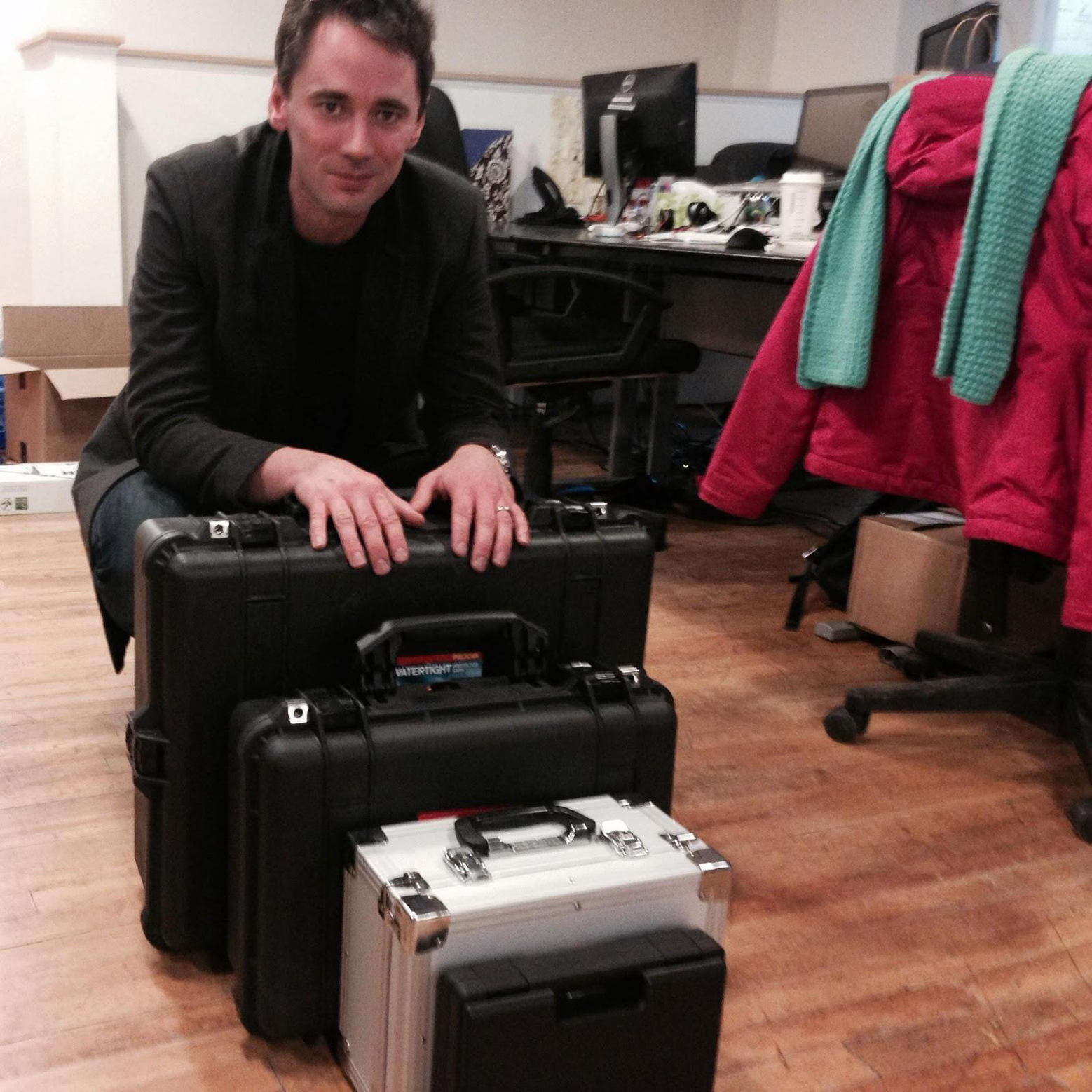Pre-Production
Team Assembly
This production brought together teams from three groups: Frontline, Secret Location, and the Tow Center for Digital Journalism. Frontline, a prestigious documentary program on the PBS television network, brought long-form, television journalism expertise. Frontline funded the shooting and leveraged the “traditional” television documentary it was already producing. This virtual reality project was part of that program’s continuing push into digital and Internet platforms and products.
Secret Location, an award-winning interactive agency headquartered in Toronto, has been developing virtual reality work since January of 2014—seemingly a short time, but not in the context of this new field. The agency brought critical VR creative experience, its existing hardware and software tool-development, and its established VR workflows. It capitalized on previous experience with 3D game design and production necessary for VR but rare in journalism teams.
The Tow Center for Digital Journalism is a research and development center within the Columbia University Graduate School of Journalism. The Tow Center funded Secret Location’s work, and was part of the project’s fundraising and development process. The Tow Center brought research and analytical background, as well as media-project and team-management experience. For the Tow Center, this project contributes to continuing lines of research in new platforms and production practices for journalism.
Story Selection
During the second half of 2014, Frontline was producing a number of documentaries that were candidates for VR treatment. Each party involved in our project had a number of key criteria for a story that could take advantage of the medium’s attributes: It needed scenes and locations that were important to the audience’s understanding of the narrative. It also had to benefit significantly from a feeling of user presence. However, logistics factored in, too: The camera and microphone would be bulky, intrusive, and tricky to operate. The story’s director would have to be adaptable and willing to explore new technologies.
The team explored the potential of one Frontline production about end-of-life decisions. That project’s director had already gained access to and the trust of several families at Boston’s Brigham and Women’s Hospital and the Dana-Farber Cancer Institute. Despite the likely emotional power of being “in the room” and the potential to demystify a hidden experience around end-of-life interactions, we ultimately rejected the option because we couldn’t figure out an ethical way to be present with a bulky, ugly camera while maintaining the intimacy and sensitivity necessary for the director’s established fly-on-the-wall style of filmmaking.
An Ebola story, already in the early stages of production, became our favored option. Dan Edge, the director, was a filmmaker with experience incorporating innovative digital processes into his productions. The locations throughout West Africa were significant to the story and unfamiliar to many audiences. Nonetheless, the story still presented challenges. Secret Location would have preferred that a cameraperson with 360-degree video experience work alongside the director. That wasn’t possible. In fact, shooting conditions were extremely difficult all around and fast communication between those in the field and the experts in Toronto proved impossible.
Immersive Video Technology Development
Secret Location had already designed and built a camera rig for shooting the necessary 360-degree, stereoscopic video—having found that none of the commercially available equipment met its requirements.ii The agency had used the equipment to record VR video of a basketball game to promote BallUp, a reality TV show. For our project, the team designed and built a slightly updated version, including a 5.1-channel microphone to record surround sound. We also leveraged Secret Location’s existing 360-degree video post-production workflow.
The full production and post-production technology we used is detailed in the appendices of this report.
VR Training and Story Discussion
 Once the camera was built and the topic chosen, key members of the
production and post-production teams met in Secret Location’s Toronto
offices. The agenda of the five-hour meeting was to train the director,
Dan Edge, to use the camera; workshop the story; and begin to establish
a common understanding of the VR platform and the film’s goals. This
workshop was the first time Secret Location and Frontline staff met.
The Frontline staff already had a well-formed understanding of
traditional documentary and the facts of the Ebola outbreak, but
discussion of the VR product was very basic and open-ended. At this
point the team had only just started sketching possibilities for the VR
experience’s overall structure. Some journalistic concepts were new to
the Secret Location team, and director Dan Edge did not have any history
working in VR.
Once the camera was built and the topic chosen, key members of the
production and post-production teams met in Secret Location’s Toronto
offices. The agenda of the five-hour meeting was to train the director,
Dan Edge, to use the camera; workshop the story; and begin to establish
a common understanding of the VR platform and the film’s goals. This
workshop was the first time Secret Location and Frontline staff met.
The Frontline staff already had a well-formed understanding of
traditional documentary and the facts of the Ebola outbreak, but
discussion of the VR product was very basic and open-ended. At this
point the team had only just started sketching possibilities for the VR
experience’s overall structure. Some journalistic concepts were new to
the Secret Location team, and director Dan Edge did not have any history
working in VR.
Secret Location’s project manager and its camera designers explained the equipment’s operation and handed over four cases containing the cameras, sound gear, batteries, chargers, and stands.
This workshop was the only time prior to field production for face-to-face or online collaboration between the VR-experienced Secret Location team and the journalistically experienced Frontline team.